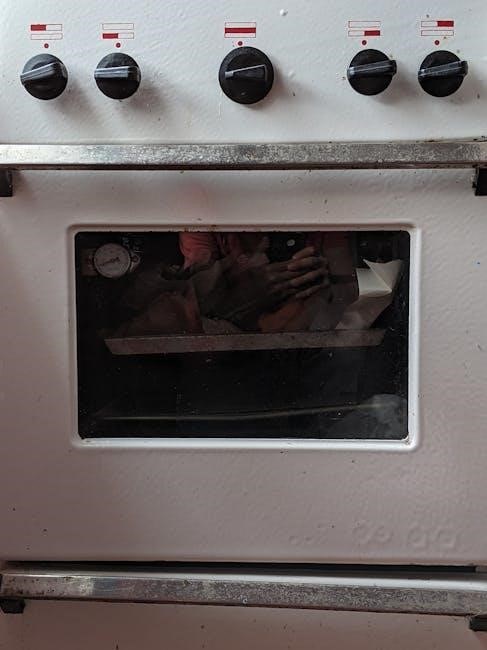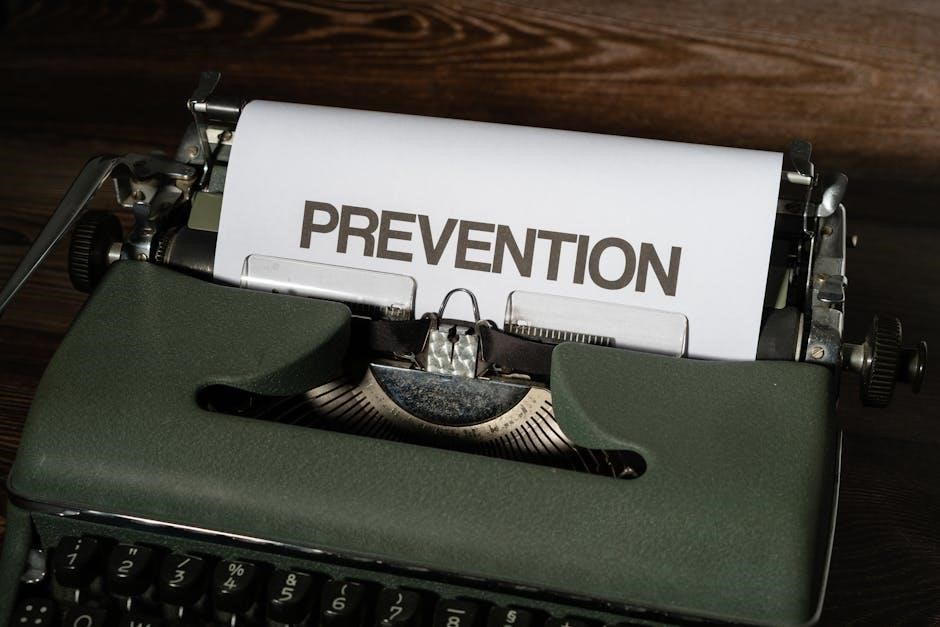Food Temperature Record Sheet: A Comprehensive Guide

A food temperature record sheet is a crucial tool for any business handling food. It’s a safety checklist, providing a simple way to monitor and record temperatures. This ensures food safety and prepares you for health inspections. These logs help track temperatures in refrigerators, freezers, and other storage areas.

Importance of Food Temperature Monitoring
Food temperature monitoring is paramount in maintaining food safety and preventing foodborne illnesses. Temperature is one of the biggest factors that can cause food spoilage, particularly for items sensitive to temperature changes. Regular monitoring ensures that food is stored and processed at safe temperatures, minimizing the risk of bacterial growth and contamination. Maintaining food at correct temperatures is required by law.
Proper temperature control extends the shelf life of food products, reducing waste and saving costs. By adhering to recommended temperature guidelines, businesses can guarantee the quality and safety of their offerings. In addition, consistent temperature monitoring supports food worker accountability, allowing managers to verify that food is being handled correctly. It is a critical element of a comprehensive food safety program.
Accurate temperature records also serve as evidence of compliance with food safety regulations, which is essential during health inspections. Detailed logs of temperature readings demonstrate a commitment to food safety and can help a business avoid penalties or closures. Furthermore, consistent monitoring helps identify potential issues early on, enabling prompt corrective actions and preventing larger problems down the line.
Why Use a Food Temperature Record Sheet?
A food temperature record sheet is an essential tool for any food-related business, ensuring food safety and regulatory compliance. These sheets provide a structured way to monitor and document temperatures of food items at various stages, from receiving to storage, cooking, and holding. Using a record sheet helps prevent foodborne illnesses by ensuring that food is kept at safe temperatures, inhibiting bacterial growth.
Furthermore, a food temperature record sheet supports accountability among staff members. By requiring employees to regularly check and record temperatures, it promotes diligence and responsibility in maintaining food safety standards. This documentation also serves as evidence of compliance with food safety regulations during inspections, potentially preventing fines or closures.
Beyond compliance, these sheets aid in identifying potential issues before they escalate. Regular monitoring can reveal inconsistencies or equipment malfunctions, allowing for timely corrective actions. They also help improve overall food quality and reduce waste by ensuring proper storage and handling. The templates provide an easy-to-use method for maintaining essential food safety records.
Key Elements of a Food Temperature Record Sheet
A comprehensive food temperature record sheet should include several key elements to ensure accurate and effective monitoring. Firstly, it must have a clear section for the date and time of each temperature reading. This allows for tracking temperature fluctuations over time and identifying potential issues.
Secondly, the sheet should specify the food item being measured and its location, whether it’s in a refrigerator, freezer, or during cooking. Including a column for the target temperature range is also crucial, providing a reference point for comparison. The actual temperature reading should be clearly recorded, along with the initials of the person taking the measurement.
Additionally, the record sheet should have a section for noting any corrective actions taken if the temperature is outside the acceptable range. This could include adjusting refrigerator settings, discarding spoiled food, or other necessary steps. Finally, the sheet should be organized and easy to read, with clear headings and sufficient space for recording all necessary information. Consistent and accurate completion of these sheets is vital for maintaining food safety standards.
Types of Food Temperature Logs
Various types of food temperature logs cater to different aspects of food handling and storage. A “Receiving Temperature Log” is essential for documenting the temperature of food deliveries upon arrival, ensuring they meet safety standards from the start. “Cooking and Reheating Temperature Logs” are vital for tracking internal food temperatures during cooking and reheating processes, guaranteeing that foods reach safe minimum temperatures to eliminate harmful bacteria.
Another crucial type is the “Cooling Temperature Log,” used to monitor the cooling process of cooked foods, ensuring they cool down rapidly enough to prevent bacterial growth. Then there’s the “Refrigeration/Freezer Temperature Log”, which continuously monitors the temperature of storage units like refrigerators and freezers, maintaining a consistently safe environment for perishable items. Each log type serves a distinct purpose in ensuring comprehensive food safety management.
Some establishments might also use specialized logs, such as those for display chill temperatures or hot holding units. The selection of appropriate logs depends on the specific operations and food safety plan of the business.
Temperature Log for Receiving Food Deliveries
A temperature log for receiving food deliveries is a critical component of any food safety program. This log serves as a record of the temperatures of food items when they arrive at a food establishment. Properly documenting these temperatures ensures that foods have been transported safely and have not entered the temperature danger zone, where bacteria can rapidly multiply.
Typically, this log includes fields for the date, time, name of the food item, supplier, and the internal temperature of the food. It should also include a space for noting any corrective actions taken if the temperature is outside the acceptable range, such as rejecting the delivery. Regular monitoring and accurate recording of receiving temperatures help prevent foodborne illnesses and maintain the quality of ingredients.
By using a receiving temperature log, businesses can verify that food is being delivered at safe temperatures, supporting food worker accountability and allowing managers to ensure compliance with food safety regulations. It’s a proactive step in ensuring food safety from the moment it enters the premises.
Cooling Temperature Log
A cooling temperature log is an essential tool for monitoring the cooling process of cooked foods in a food service environment. This log helps ensure that food is cooled rapidly enough to prevent the growth of harmful bacteria, reducing the risk of foodborne illnesses; Accurate and consistent use of a cooling log supports food safety and compliance with health regulations.
The cooling temperature log typically includes fields for recording the date, time, food item, initial temperature, and subsequent temperature readings at regular intervals. This allows staff to track the cooling rate and verify that food reaches safe temperatures within specified timeframes. It’s crucial to document any corrective actions taken if cooling is not occurring at the required rate, such as using an ice bath or dividing the food into smaller portions.
By meticulously documenting the cooling process, businesses can demonstrate their commitment to food safety and identify potential issues early on. This log also serves as a valuable training tool for staff, reinforcing the importance of proper cooling procedures in maintaining food quality and safety.
Cooking and Reheating Temperature Log
The cooking and reheating temperature log is a critical component of any food safety program, ensuring that food reaches safe internal temperatures to eliminate harmful bacteria. This log tracks the temperatures of food during the cooking and reheating processes, verifying that they meet regulatory requirements and prevent foodborne illnesses. Accurate record-keeping is essential for demonstrating compliance and maintaining consumer trust.

Typically, a cooking and reheating temperature log includes fields for the date, time, food item, initial temperature, target temperature, and final temperature achieved. It also includes space for recording the cooking or reheating method used and the initials of the staff member responsible. Regular monitoring and documentation are crucial for identifying potential issues and implementing corrective actions promptly.
By diligently using a cooking and reheating temperature log, food service establishments can ensure that food is cooked or reheated to safe temperatures, minimizing the risk of foodborne illnesses. This log also serves as a valuable training tool for employees, emphasizing the importance of proper cooking and reheating procedures in maintaining food safety and quality. It is a must-have for food safety.
Refrigeration/Freezer Temperature Log
The refrigeration/freezer temperature log is an indispensable tool for maintaining food safety and preventing spoilage. This log is used to monitor and record the temperatures of refrigerators and freezers on a regular basis, ensuring that food is stored at safe temperatures to inhibit bacterial growth. Consistent temperature monitoring is crucial for complying with food safety regulations and protecting public health.

A typical refrigeration/freezer temperature log includes fields for the date, time, and temperature of each unit. Some logs may also include space for recording the ambient temperature, any maintenance performed, and the initials of the staff member responsible for monitoring. Temperatures should be checked and recorded at least once per shift, or more frequently if required by local regulations.
By diligently using a refrigeration/freezer temperature log, food service establishments can ensure that food is stored at safe temperatures, minimizing the risk of foodborne illnesses and spoilage. This log also serves as a valuable tool for identifying potential equipment malfunctions or temperature fluctuations, allowing for prompt corrective action to prevent food safety hazards and the need to discard product. It is a simple step to take for peace of mind.
Free Templates and Resources for Food Temperature Recording
Numerous free templates and resources are available online to assist food businesses in implementing effective food temperature recording practices. These resources range from simple, printable temperature log sheets to comprehensive digital solutions, catering to diverse needs and operational scales. Utilizing these free tools can significantly streamline food safety management and ensure compliance with regulatory requirements.
Many websites offer downloadable PDF templates for various food temperature logs, including receiving, cooling, cooking, reheating, and refrigeration/freezer logs. These templates typically include sections for recording the date, time, food item, internal temperature, and any corrective actions taken. Some templates also incorporate checklists and guidelines to ensure accurate temperature monitoring.
In addition to PDF templates, digital food safety software often provides free trials or basic versions that include temperature logging features. These digital solutions offer advantages such as automated data collection, real-time alerts for temperature deviations, and comprehensive reporting capabilities. These resources provide convenience, efficiency, and improved accuracy in maintaining food temperature records. Explore the readily available options to enhance your food safety protocols.

